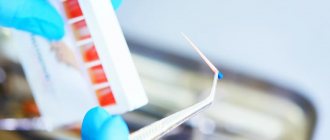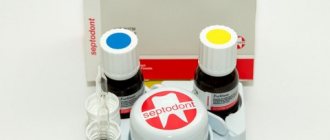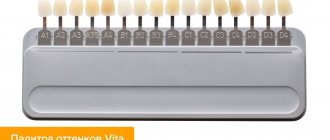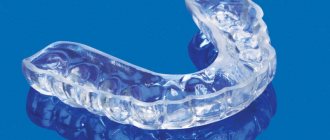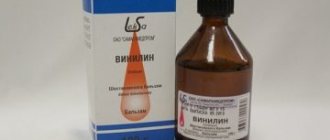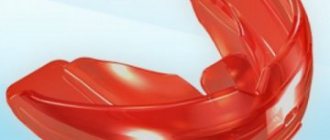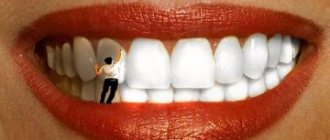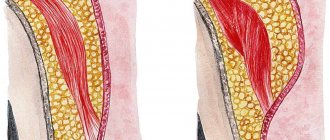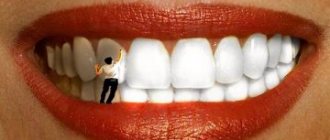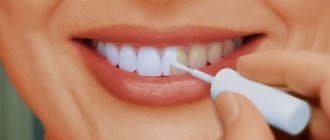Wiktionary has an entry for "gutta-percha"
Gutta-percha
(English
gutta-percha
; from the Malay “
guttah
” - “resin”, “gum”; “
perscha
” or “
percha
” - “island”, or “
pertja
” - the name of the plant) - resin extracted from the plant “
pertja
” ; high molecular weight hydrocarbon, identical in chemical composition to natural rubber. Chemical formula: (C5H8)n (polymer of 1,4-isoprene); geometric isomer (trans form) of isoprene, characterized by significantly less elasticity.
It is extracted from the milky juice of gutta-percha plants growing on the islands of the Malay Archipelago and the Philippine Islands. In Russia it is extracted from the warty euonymus. Gutta-percha is a leather-like product that is white or yellowish in color. It is capable, like rubber, of being vulcanized with sulfur.
Application
It is used as an insulating material in the electrical and radio industries, in the chemical and shoe industries, as well as in dentistry as a material for obturation of root canals in the treatment of pulpitis and periodontitis (non-absorbable filler for filling root canals, root filling). In particular, drive belts, conveyor belts, various gaskets, chemically resistant containers, various adhesives, and stamps are also made from gutta-percha. In the past, it was also used as a type of rubber - in particular, it was a traditional material for the manufacture of golf balls for a long time.
Chemistry[edit]
Chemical structure of gutta-percha [1]
Chemically, gutta-percha is a polyterpene, a polymer of isoprene, or polyisoprene in particular (trans - 1,4-polyisoprene). The cis structure of polyisoprene is a common latex elastomer. While latex rubbers have an amorphous molecular structure, gutta-percha (trans-structure) crystallizes, resulting in a stiffer material. It exists in alpha and beta forms, with the alpha form being brittle at room temperature.
Mentions in literature
- Dmitry Grigorovich's story “The Gutta-percha Boy” tells about a boy who performs in the circus thanks to his extraordinary flexibility.
- In Nikolai Leskov’s story “Lefty”, the so-called “gutta-percha pill” is mentioned as one of the means of treating “half-skipper” (distorted “under-skipper”) - an Englishman who became very ill from drinking a large amount of alcohol (a bet was made with Lefty: who is more drinks alcohol) on a ship sailing from England to Russia.
- In Vsevolod Garshin’s book “From the memoirs of Private Ivanov”: “They lived together; the captain took kindly to the ensign, gave him water and food, and during the rains even covered him with his only gutta-percha cloak.”
- The book by Alexander Olbik is called “Gutta-percha love”
- In Vladimir Vysotsky’s song “Cliffhanger”
Description[edit]
Gutta -percha tree Palaquium gutta
have a height of 5–30 meters (20–100 ft) and up to 1 m (3 ft) in trunk diameter. The leaves are evergreen, alternate or spirally arranged, simple, entire, 8–25 cm (3–10 in) long, glossy green above and often yellow or glaucous below. The flowers are produced in small clusters along the stems, each flower having a white corolla with four to seven (usually six) sharp petals. The fruit is a 3–7 cm (1–3 in) ovoid berry containing one to four seeds; in many species the fruit is edible.
In Australia, gutta-percha is the common name specifically used for the spurge tree Excoecaria parvifolia
, which produces aromatic heavy wood of a dark brown color.
An excerpt characterizing Gutta-percha
Balashev went further, according to Murat, expecting to be introduced to Napoleon himself very soon. But instead of a quick meeting with Napoleon, the sentries of Davout's infantry corps again detained him at the next village, as in the advanced chain, and the adjutant of the corps commander was summoned and escorted him to the village to see Marshal Davout. Davout was Arakcheev of the Emperor Napoleon - Arakcheev is not a coward, but just as serviceable, cruel and unable to express his devotion except by cruelty. The mechanism of the state organism needs these people, just as wolves are needed in the body of nature, and they always exist, always appear and stick around, no matter how incongruous their presence and proximity to the head of government seems. Only this necessity can explain how the cruel, uneducated, uncourtly Arakcheev, who personally tore out the mustaches of the grenadiers and could not withstand danger due to his weak nerves, could maintain such strength despite the knightly noble and gentle character of Alexander. Balashev found Marshal Davout in the barn of a peasant's hut, sitting on a barrel and busy with writing (he was checking accounts). The adjutant stood next to him. It was possible to find a better place, but Marshal Davout was one of those people who deliberately put themselves in the gloomiest conditions of life in order to have the right to be gloomy. For the same reason, they are always hastily and persistently busy. “Where is there to think about the happy side of human life, when, you see, I’m sitting on a barrel in a dirty barn and working,” said the expression on his face. The main pleasure and need of these people is to, having encountered the revival of life, throw gloomy, stubborn activity into the eyes of this revival. Davout gave himself this pleasure when Balashev was brought in to him. He went even deeper into his work when the Russian general entered, and, looking through his glasses at Balashev’s animated face, impressed by the wonderful morning and the conversation with Murat, he did not get up, did not even move, but frowned even more and grinned viciously. Noticing the unpleasant impression this technique produced on Balashev’s face, Davout raised his head and coldly asked what he needed. Assuming that such a reception could be given to him only because Davout does not know that he is the adjutant general of Emperor Alexander and even his representative before Napoleon, Balashev hastened to announce his rank and appointment. Contrary to his expectations, Davout, after listening to Balashev, became even more severe and rude. - Where is your package? - he said. – Donnez le moi, ije l'enverrai a l'Empereur. [Give it to me, I will send it to the emperor.] Balashev said that he had orders to personally deliver the package to the emperor himself. “The orders of your emperor are carried out in your army, but here,” said Davout, “you must do what you are told.” And as if in order to make the Russian general even more aware of his dependence on brute force, Davout sent the adjutant for the duty officer. Balashev took out the package containing the sovereign’s letter and placed it on the table (a table consisting of a door with torn hinges sticking out, placed on two barrels). Davout took the envelope and read the inscription. “You have absolutely the right to show or not show me respect,” said Balashev. “But let me point out that I have the honor to bear the title of His Majesty’s Adjutant General...”
Uses [edit]
Historical[edit]
Manufacturing gutta-percha cable at the Telegraph Construction and Maintenance Company in Greenwich, London, c. 1865
Scientifically classified in 1843, it has proven to be a useful natural thermoplastic. In 1851, 30,000 long cwt (1,500,000 kg) of gutta percha were imported into Great Britain. [2]
In the second half of the 19th century, gutta-percha was used for many household and industrial purposes [3], and the word became a household word. In particular, it was needed as insulation for submarine telegraph cables, [2] which, according to author John Tully, led to unstable harvesting and power breakdown. [4]
According to endodontology
Harvey Weeks Felter and John Urie Lloyd:
Long before gutta percha was introduced to the Western world, the indigenous people of the Malaysian archipelago used it in a less processed form for knife handles, canes and other purposes. The first European to discover this material was John Tradescant, who collected it in the Far East in 1656. He called this material "Mather Wood". Dr. William Montgomery, a medical officer in the Indian Service, introduced gutta-percha to practical use in the West. He was the first to appreciate the potential of this material in medicine, and was awarded the gold medal of the Royal Society of Arts of London in 1843 [5].
Electrical [edit]
Gutta-percha latex is biologically inert, elastic and is a good electrical insulator with high dielectric strength. Wood of many species is also valuable. [ citation needed
]
Inventors discovered the Western properties of gutta-percha latex in 1842 through samples sent to England by William Montgomery,[ edit]
], although the people of its Malay habitat have used it for many applications for centuries.
(Faraday is quoted as having discovered its value as an insulator soon after the material was introduced to Britain in 1843. [6]) Allowing this liquid to evaporate and coagulate in the sun produced latex, which could again be made flexible by hot water. , but which did not become brittle, unlike rubber before the discovery of vulcanization. [ citation needed
]
By 1845, telegraph wires insulated with gutta-percha were being produced in Great Britain. It served as the insulating material for the first submarine telegraph cables, including the first transatlantic telegraph cable. [7] The material was the main component of Chatterton joint, used as an insulating sealant for telegraph and other electrical cables. [ citation needed
]
The dielectric constant of dried gutta-percha ranges from 2.56 to 3.01. The resistivity of dried gutta-percha ranges from 25 x 10 14 to 370 x 10 14 ohm-cm. [8]
Beginning around 1940, polyethylene replaced gutta-percha as an electrical insulator. [ citation needed
]
Other[edit]
In the mid-19th century, gutta percha was used to make furniture, notably by the Gutta Percha Company, founded in 1847. [2] Some of these revival style decorative objects were shown at the Great Exhibition of 1851 in Hyde Park. London. The company also produced various tableware. [ citation needed
]
The "guttie" golf ball (which had a hard gutta-percha core) revolutionized the game. [ citation needed
] Gutta percha was used to make "mourning" jewelry because it was dark in color and could be easily molded into beads or other shapes. Pistol grips and shoulder pads for rifles were also made from gutta-percha as it was hard and durable, but fell into disuse when synthetic plastics such as Bakelite became available.
Gutta-percha was used in canes and walking sticks. In 1856, U.S. Representative Preston Brooks used a gutta-percha cane as a weapon in an attack on Senator Charles Sumner. [9]
Today[edit]
Dentistry [edit]
The same bioinertness that makes it suitable for use in marine cables also means that it is difficult to react in the human body. It is used in various surgical devices and during root canal therapy. It is primarily a material used to obturate or fill the empty space within the root of a tooth after it has undergone endodontic treatment. Its physical and chemical properties, including but not limited to its inertness and biocompatibility, melting point, [10] ductility and malleability, make it important in endodontics, [5] for example in the form of gutta-percha points. Zinc oxide is added for reducing brittleness and improving ductility. Barium sulfate is added to provide radiopacity so that its presence and location can be verified on dental x-rays.
The material is elastic and pliable
It is interesting that when translated from English, the first part of the word “gutta” means resin, the second “percha” is translated as island. The expression “gutta-percha” has stuck among the people; it is used to describe those whose character demonstrates flexibility and evasiveness in thinking and actions.
Elastic material seals tooth canals well
What are the benefits of gutta-percha in dentistry? This allows you to easily fill the entire tooth cavity and reliably seal its canals, as well as strengthen the filling. But provided that the dentist does his job efficiently and has no problems determining the length of the canals. In cases where the tooth canals were not completely filled, patients may face unpleasant consequences: the infection can easily penetrate into the pulp chamber, cause complications, and the tooth will have to be unfilled and re-treated.
No allergic reactions
As scientists managed to find out, the material is quite inert and non-toxic. This means that it is not capable of entering into any reactions with the human body. Gutta-percha is a guarantee that even in sensitive patients the risk of tissue irritation and negative reactions is minimal. All materials used in dentistry for the purpose of preserving natural teeth must meet the same selection criteria as gutta-percha. One of its few disadvantages is the lack of adhesion to the walls of the tooth. But this disadvantage is compensated by special cement compositions, root sealants and pastes, which are used in conjunction with gutta-percha points.
Using natural materials, does not cause allergies
What is a gutta-percha pin made of? In addition to gutta-percha itself, specialists use zinc oxide to create it. It gives strength to the structure, which helps strengthen significantly damaged teeth and use the pin as a reliable support for an artificial crown, if necessary. The content of this substance is about 70% of the entire structure. Antioxidants are also used as excipients.
